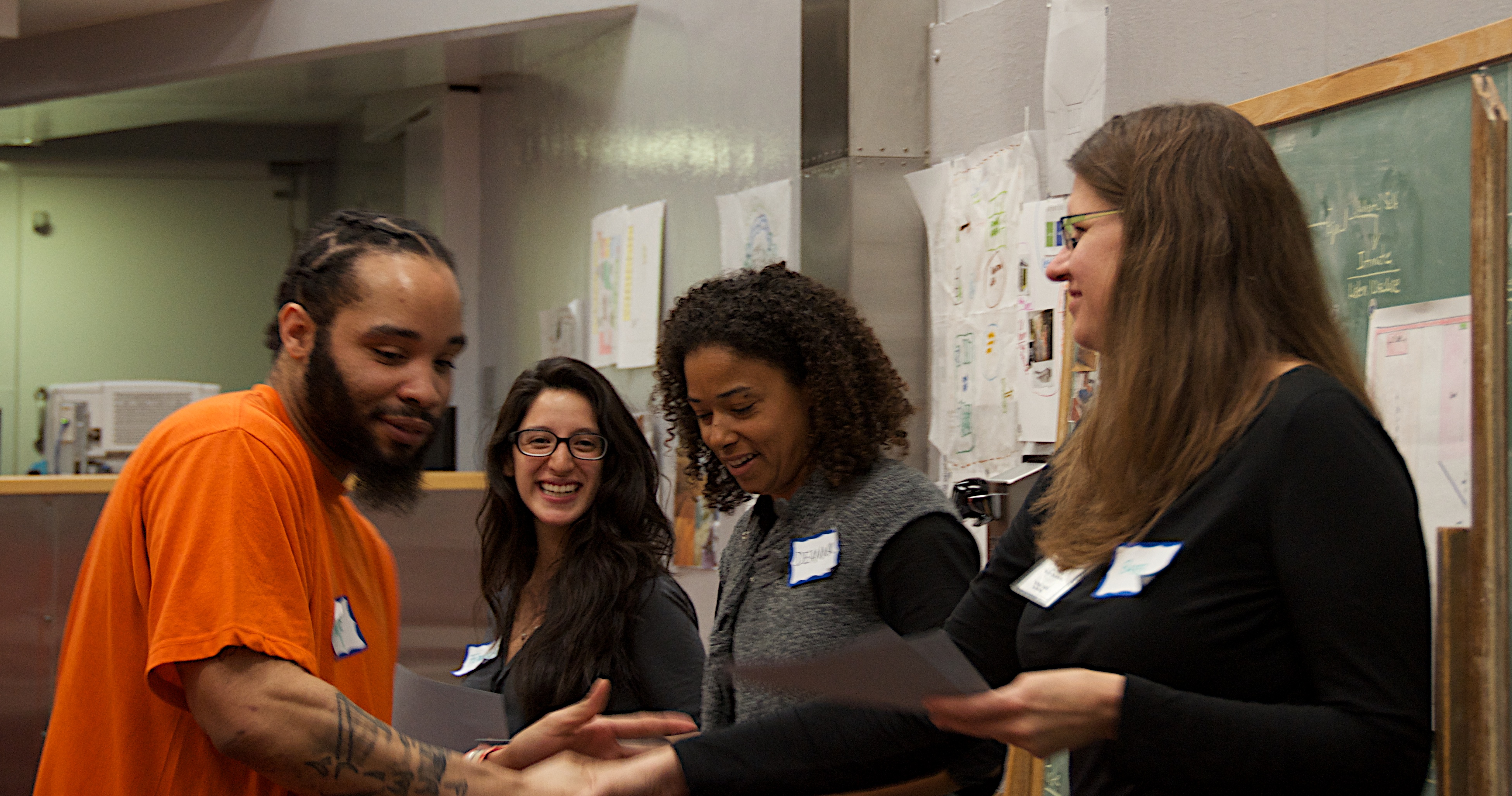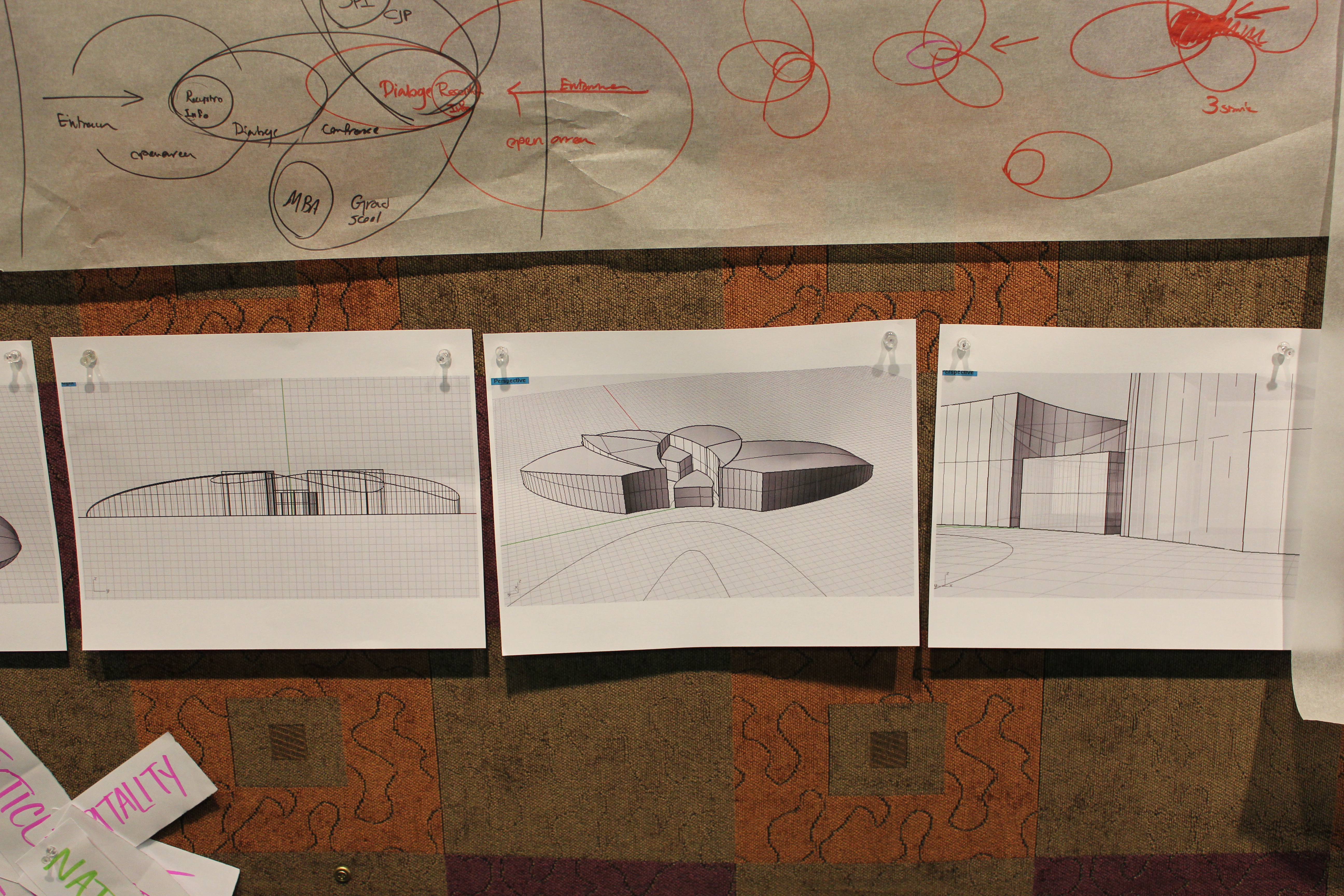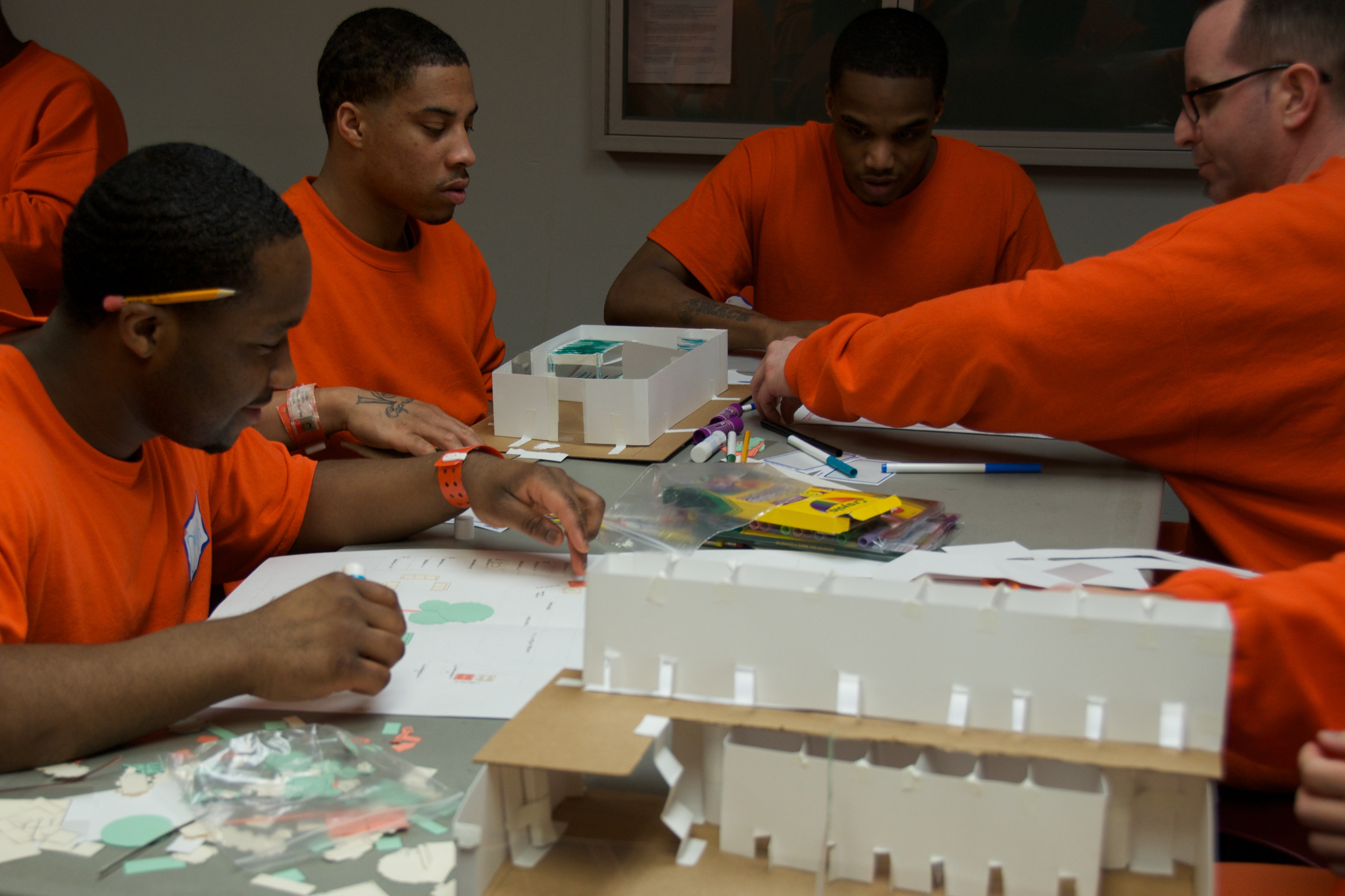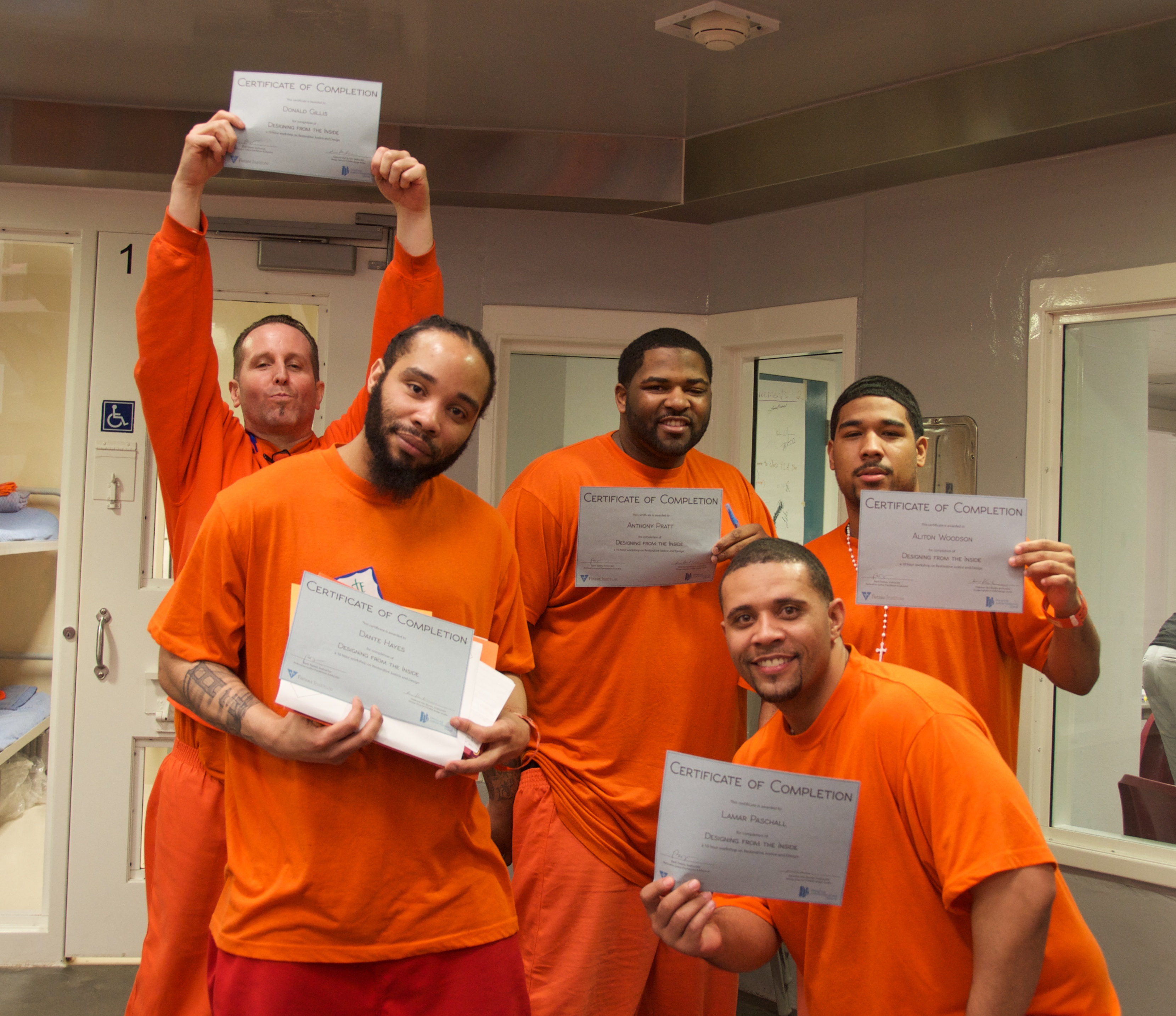The Designing Justice Road Show
Just yesterday Barb flew back to Lancaster after our 3 week road show of testing the toolkit through a variety of courses and workshops. Our efforts took us from a university in Virginia to correctional institutions in Philadelphia and San Bruno, California. We are exhausted but happy! We successfully piloted a new class and 2 workshop formats. We learned a lot from both the participants and the different processes.
During our first 10 days together, we taught Peace by Design at Eastern Mennonite University’s Summer Peace building Institute (SPI). We had an engaged and diverse class of peace builders from the US, Canada, Iran, Liberia, and Afghanistan. Together, we created a studio environment where we engaged in dialogue on the ways in which the design of spaces in which peace building and justice work happens is important to achieving its goals. We also taught design skills which students applied to the creation of design concepts for a new peace center proposed to house EMUs Center for Justice and Peacebuilding (CJP). After a week of interviewing students, faculty, and staff, building models and much drawing, students presented three distinct design ideas to Daryl Byler, the director of CJP, EMU’s provost and an architect from a local firm with whom EMU works. Over the next month, the graduate students will be compiling all that was learned and created to produce a report for the architect and school. I love that the work from our class will be able to help the school move forward with their vision!
The second and third events over the last few weeks included workshops inside two county jails. After Barb and I rested for a weekend in our respective homes, we drove the two hours each way from Lancaster to The Cannery, a correctional facility for women in Philadelphia, for an intensive two day/10 hour workshop that we called Designing from the Inside Out. The Cannery was a far more chaotic environment than I had previously experienced as a wave of noise hit me walking through its 15 foot high barbed wire fences. In what was to prove to be a theme over the next two weeks, Barb, myself, and 9 students crammed into a tiny trailer, where we often had to improvise our class plan to help the students understand the philosophies of restorative justice and what a justice based in love might look like. For most of the ladies it could start with having some decent food in the jail. We tested a couple of new tools with furniture blocks and even created a new one on the spot. Such is the creative energy when space, time, and resources are limited.
The nature of our work is production intensive. Papers, pens, pencils, customized rulers to reduce security risks, triangles and that need to be created for every group of students. We never know exactly how many we will have until the day a workshop starts. Barb and I have spent many nights and early mornings preparing these materials, which left little time for sleep and rest. This was greatly ameliorated, when we came back to the Bay Area, with the active involvement of our intern, Francis Goyes.
We were about to enter into a 5-day/10-hour intensive workshop at the San Bruno Jail in San Francisco County and her help, along with volunteer Kelly Gregory, proved to be invaluable as we now had 18 students with whom to work in a small room on the pod. The supply list was approved in time but on the day we learned that we could not bring in red and blue folders/pens that would signify any gang alliances among our group. Francis sat on the floor of the jail lobby folding paper to create new folders. We also started to reorganize our entire week plans as we found out Saturday was no longer an option for us to teach.
Sitting in an opening circle with the 18 men, I knew we were going to have a great workshop. Coming from Community Work’s Resolve to Stop the Violence Program, these men were already well versed in restorative values and practices. This allowed us to engage more quickly with how it intersected with design. We created a group collage with images that represented current justice spaces and spaces for a justice based in love (a process created during the Cannery workshop). We also taught model-making, perspective drawing, collage, diagramming, and visual diaries. With time between classes, the men were also asked to interview staff, other men on the pod, or family members about how to create a restorative justice or healing center. They chose their own final projects and, after getting through the usual difficult process of choosing groups, they dug into their designs this past Monday, after a weekend break. Their work represented some of the most sophisticated we have seen thus far and everyone did their homework! By Tuesday, we had developed two more tools that helped them to learn how to work in groups and prepare for a presentation. I could not have been prouder as the men presented their work, with pride, in front of RSVP staff, correctional staff, the entire pod, and a reporter from the LA Times.
It was an incredible end to an intense 3 weeks. Barb and I always have to take a little time to recoup but as our next set of deliverables to our amazing funder (Fetzer Institute) is due on Monday, we must keep going. Getting the first photos from one of our workshops yesterday is helping me do that and I hope that you will be inspired to join us.





